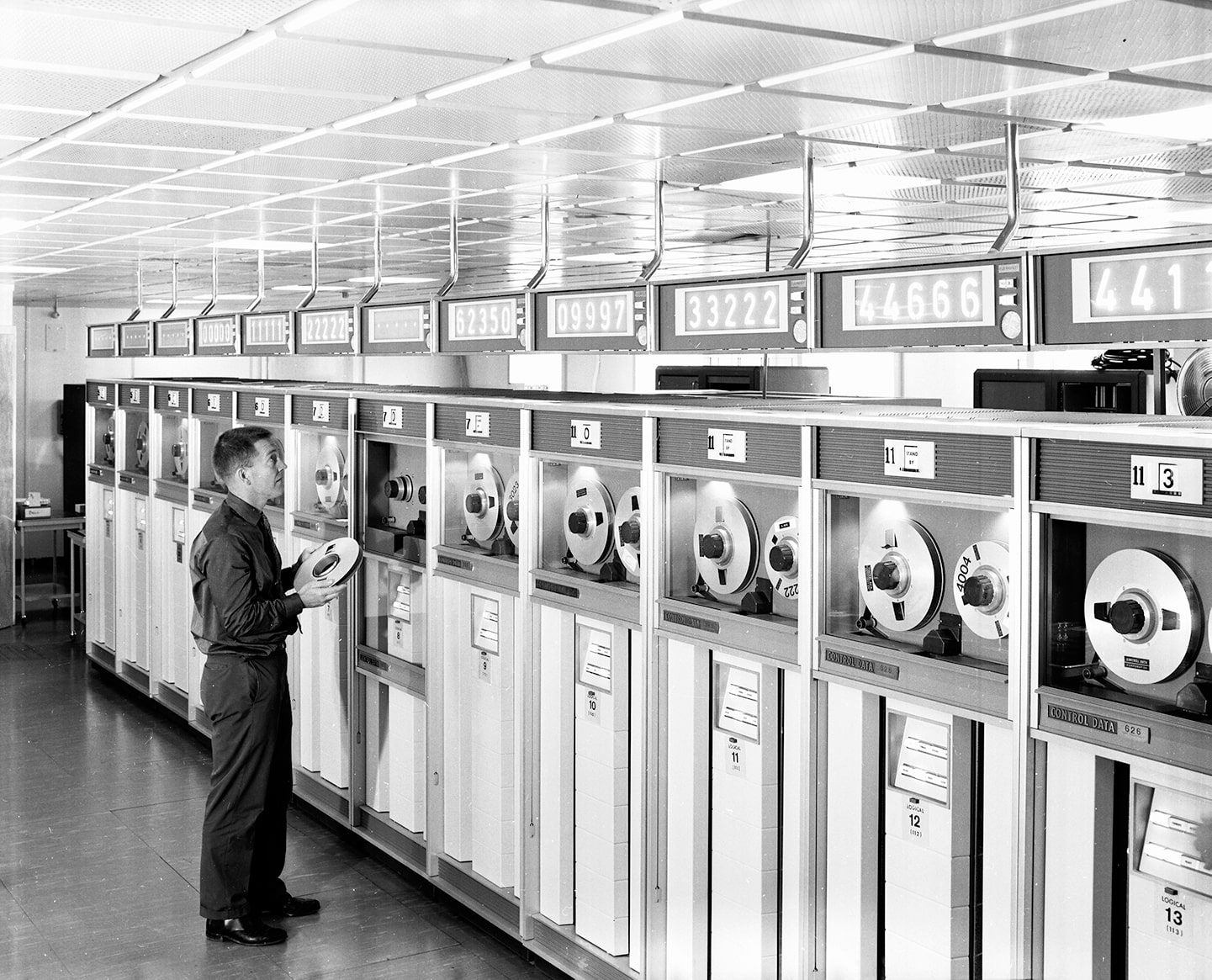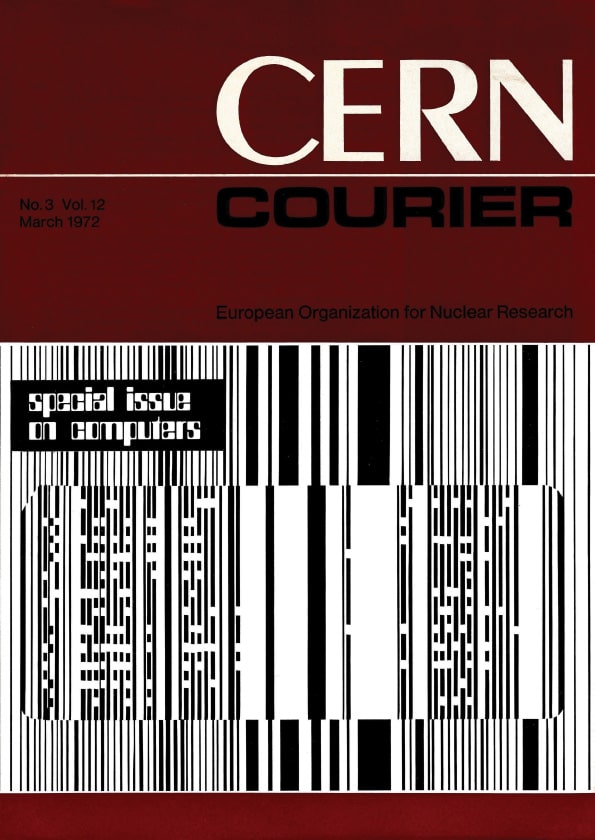CERN70: Cutting-edge computing
17 April 2024 · Voir en français
Part 7 of the CERN70 feature series. Find out more: cern70.cern
Paolo Zanella came to the CERN computing group in 1962, just a few years after the first computer had arrived

CERN’s first computer, a huge vacuum-tube Ferranti Mercury, was installed in 1958. It represented the first stage in the evolution of digital computing at CERN.
The next big step came in 1965, when the first supercomputer arrived: a CDC 6600 designed by computer pioneer Seymour Cray. This transistorised sub-microsecond machine was the first real “number cruncher”. CERN was among the first to adopt these new technologies, which required a great deal of effort to implement because of hardware instabilities.
In 1972, CERN installed the CDC 7600, then the most powerful machine on the market, five times faster than the 6600. Moving from hardware to software, CERN stepped up its efforts to adopt cutting-edge information technology (IT). These two CDC machines played a leading role in computing for high-energy physics. For many years, no other machine was as advanced and as fast as the CDC 7600, which was finally disconnected in 1984. In 12 years of service, it had processed a huge amount of work from thousands of users.
In parallel, from 1973 to 1980, CERN built highly advanced computer systems to control the accelerators. They made the Proton Synchrotron into a flexible workhorse, time-shared by its customers the Super Proton Synchrotron and later the Large Electron-Positron collider. Here CERN’s engineers implemented networks, distributed computer systems, human-computer interfaces with touchscreens, trackballs and more. The trend shifted to a decentralised system with many smaller computers, rather than one large central system that dominated computing.
The huge scientific experiments that started to appear in the 1980s, as well as those that now take data at the Large Hadron Collider, would not have been possible without a substantial human and material investment at CERN in the information processing and communication technologies. An extremely rewarding by-product has been the invention of the World Wide Web at CERN in the early 1990s, which has made a fundamental impact on science and society.
Recollections
When I came to CERN, my job was not only to find problems and solve them, but also to try and convince the physicists that computers were something useful.
Paolo Zanella

Paolo Zanella came to the CERN computing group in 1962, just a few years after the first computer had arrived. He was later head of the Data Handling Division from 1976 to 1989, before becoming professor at the University of Geneva.
“When I came to CERN, my job was not only to find problems and solve them, but also to try and convince the physicists that computers were something useful. Only a few days after I arrived, Lew Kowarski, then leader of the Data Handling Division, sent me to see Carlo Rubbia, “a future Nobel Prize winner” in Kowarski’s own words, to persuade him to use the recently installed IBM 709. Rubbia’s welcome was that physicists did not need it and did not need me. But then he called me back and said that we should try this and try that – in the end, he was one of the first to adopt computer technology and used it widely and successfully in his experiments throughout his brilliant experimental work at CERN and elsewhere.

When I was appointed division leader in 1976, it was with an assignment to reverse trends. The division was in crisis. We had powerful but unreliable computers and some software disasters. The physicists were furious. But a few years later, they were pleased about the changes and the division had earned respect.
We provided excellent service and at the same time we did drive development in the field. However, the relationship with the researchers has never been easy. When we asked for money to develop networks in the 1970s they “could not see why two computers would be interested in talking to each other”, and later the cabling of buildings and the advent of workstations was strongly opposed. In the end, IT invaded the experimental floors, the engineers’ and administrators’ offices, and just at the end of my professional life at CERN, when the World Wide Web was invented, we were recognised as one of the best and most advanced IT environments in scientific research worldwide.
I learned a lot in my training at CERN – and not only technically. Here I got the courage to take on the impossible and to win. I lived during one of the most interesting half-centuries of particle physics. At CERN, I learned a few basic questions that work universally: What is it for? Why do we need it? Will it work? And if you make something useful that works, it will surely be praised and adopted.
In the 1960s, computing was there but nobody knew what to do with it. On the other side was science, and they had to come together step-by-step. Information technology is a universal machinery that can do a lot for science and for civilisation. IT and particle physics have followed very similar growth curves pushing and changing each other. I have been very lucky to live most of my life at the frontier between these two exciting disciplines.”
----
This interview is adapted from the 2004 book “Infinitely CERN”, published to celebrate CERN’s 50th anniversary. More information about CERN’s computing history is available on the CERN IT department website.
